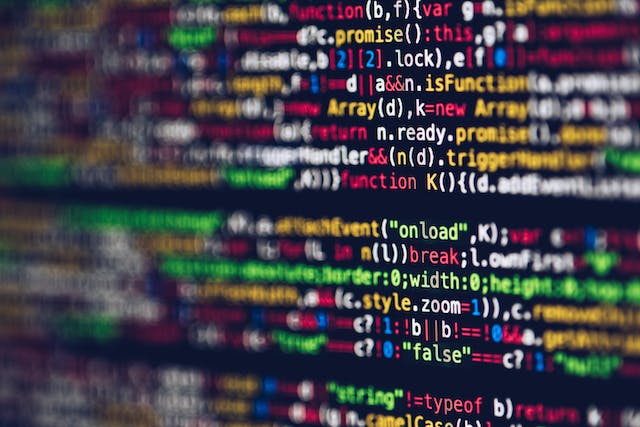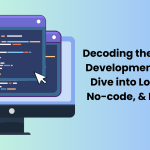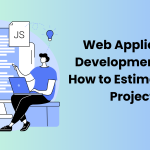Choosing an ideal tech stack is a significant decision when embarking on a new development project. A carefully-chosen web development stack can make or break the user experience and performance of the web application. In the journey of web design and development services, an interactive UI and easy-to-use UX could not make enough difference. Instead, creating a scalable, robust and wholesome digital product leads to the ultimate success of your next development project.
In this article, we are going to learn about the technology stack, anatomy of the tech stack, how it affects your web development project and how you can choose a suitable one for your project.
So, what are you waiting for! Let’s dive in!
Understanding Technology Stack
Before getting into the details, you should know about the technology stack, its categories and other web development knacks.
Every product is formed as a result of specific ingredients. Right? The same goes for digital products. In the context of a software product, different layers of succinct tools, programming languages, databases, and frameworks that deliver a sleek and functional app is what we call a technology stack. The technology stack is alternatively called as solutions stack.
Main Components of Tech Stack in the Web Development
To better understand the technology stack in web development, it is important to get familiar with the two main categories: Front-end (Client-side) and Back-end (Server-side). Both function as a free-standing set of technologies yet synchronize to work together when needed. Let’s have a look at them one-by-one.
Front-end Or Client-side Web Stack
The front-end web stack refers to the technologies responsible for creating the user interface and client-side interactions of a web application. This interface handles gathering data from the server, processes the data and then provides output to users. For example, a user browses an E-commerce website, goes through various products, prices and other graphical layouts, and then orders or checks out without ordering – is a good example of front-end user interface.
Common Front-end Web Development Stacks:
HTML (Hypertext Markup Language):
The common markup language used to create web pages’ content and structure. It is responsible for creating the basic foundation of a website.
CSS (Cascading Style Sheets):
Used for styling and visual presentation, allowing designers to control the layout, colors, fonts, and look of the web pages.
JavaScript:
A programming language that enables interactive and dynamic elements on web pages, facilitating client-side interactivity and user experience enhancements.
Front-end Frameworks
A group of folders and files containing standardized code make up a front-end framework. These ready-made scripts speed up the development process and provide useful elements, enabling developers to tweak the final design according to the app’s specifications.
Frameworks create the front-end HTML and CSS components. For HTML and CSS, some well-liked frameworks include Bootstrap, Foundation, Semantic UI, and Stylus for Node.js apps.
React:
A popular JavaScript library for building user interfaces, known for its component-based architecture and efficient rendering, used for creating interactive and responsive web applications.
Angular:
A robust JavaScript framework developed by Google, used for building large-scale, feature-rich web applications with a modular and scalable approach.
Vue.js:
A progressive JavaScript framework that offers a lightweight and flexible approach to building user interfaces, suitable for both small and large-scale applications.
Back-end Or Server-side Web Stack
The back-end web stack comprises technologies that handle server-side processing, data storage and management, and business logic for web applications.
Common Back-end Web Development Stacks:
Node.js:
A runtime environment that allows server-side JavaScript execution, enabling the use of JavaScript for both front-end and back-end development.
Django:
A high-level Python framework that follows the model-view-controller (MVC) architectural pattern, offering a robust set of tools for rapid development, database management, and handling complex web applications.
Ruby on Rails:
A popular Ruby-based framework that follows the MVC pattern and emphasizes convention over configuration, enabling developers to build web applications rapidly with less code.
ASP.NET:
A framework developed by Microsoft for building scalable and secure web applications using many programming languages such as C# or Visual Basic.NET.
Express.js:
A versatile and flexible Node.js framework that is lightweight and streamlines the process of developing web apps and APIs.
Flask:
A small-to-medium-sized Python framework with an emphasis on simplicity and flexibility that is suited for web applications and APIs.
How to Choose An Ideal Technology Stack for Your Business?
Once you have understood the anatomy of the tech stack and its categories, here are some tips to consider while looking out for a perfect one. Read on the following list of factors that would help you make the right decision:
Project Type & Size
Many noobs start right away with web development stacks once the need arises. They don’t generally conduct requirement analysis. However, defining the project type and size, discussing app’s features and level of complexity and timeline are some important points that you should consider before choosing a technology stack. There are different web stacks for various project sizes.
- Small or Simple Apps: You may use Python-Django tech stacks for simple applications. Nodejs-React might also be a suitable alternative if you’re looking for a complete stack solution for tiny projects.
- Medium Apps: The ideal complete stacks for these projects may be MEAN or MERN. MongoDB (database), Express.js (application framework), Angular (front-end framework), and Node.js (runtime environment) make up the well-known MEAN tech stack. As opposed to MERN, which is a technology stack made up of MongoDB, Express.js, React/Redux, and Node.js. Additionally, you may hire web design and development services to design scalable and user-friendly apps.
Large or Complex Apps: It is better to choose core technologies for these projects, such as ReactJS, AngularJS, or RoR, and then mix them with other tools based on the functionality your website requires.
Consider Time to Market your App
If you have less time to market your app, you must use well-known and proven methods that enable seamless third-party integrations and so cut down on development time. The best technology stack for this job is MEAN. For projects with a deadline, you shouldn’t use Java or C# because they take longer to create.
Scalability
Although it is wise to launch an MVP at the time of rolling out, you should always consider the scalability potential of technology stacks. Make sure that you select the stacks that help you in future growth and expansion.
Choose Security as a Keystone
When selecting a tech stack for your web application development, security should be your first priority. Select a stack that supports end-to-end encryption of your framework to prevent stealth and unintended adjustments of your data and sensitive information.
Development Costs and Developers’ Expertise
Think about your development team’s experience. What frameworks and programming languages are they skilled in? It’s crucial to select the best web development technology that your development team feels confident with. This will guarantee a seamless development process and lower the possibility of delays or mistakes.
Conclusion
Undoubtedly, the technology stack affects the success and responsiveness of a software product. Thus, choosing a suitable technology stack depending on your app’s requirements, size, scalability and maintenance costs is always recommended.







